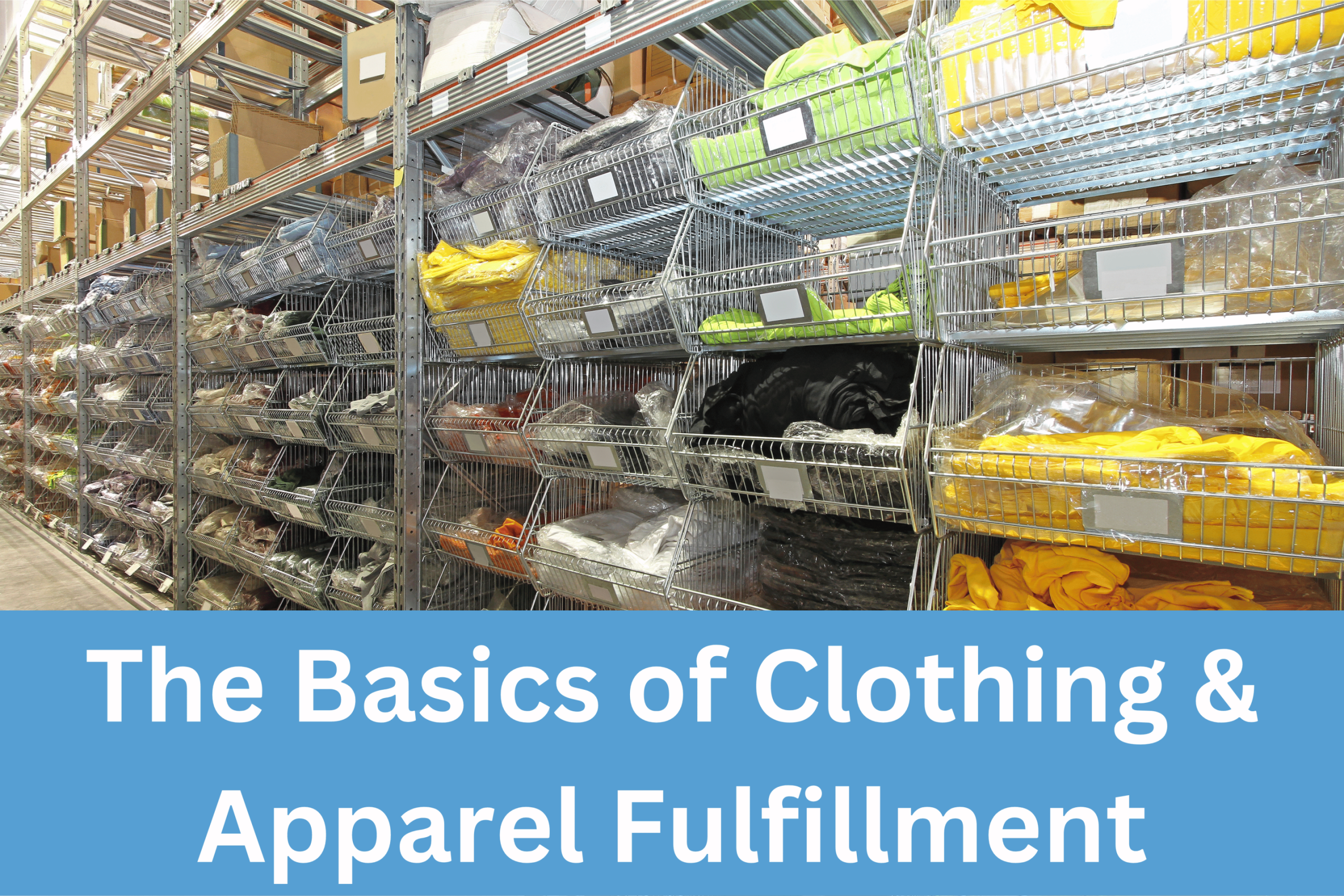Who doesn’t love opening a box containing the new piece or outfit they ordered? I’ll tell you who – The customer who was made to wait, received the wrong color, size, or item, or worse yet, did not receive an item they ordered! Apparel and clothing fulfillment can be complex as many items are often similar. So whether you are an eCommerce veteran, looking to start the next big name, or somewhere in between, this article is for you.
What is an Apparel/Clothing Fulfillment Center?
An apparel/clothing fulfillment center is a location, typically a warehouse or office space, dedicated to receiving, storing, picking, packing, and shipping apparel/clothing orders. These are either outsourced to a 3PL or kept “in-house”.
How Do Apparel/Clothing Fulfillment Centers Operate?
There are many different ways to operate an apparel/clothing fulfillment center. However, there are often some consistencies throughout each option. For example, most operations will utilize OMS (Order Management System) and WMS (Warehouse Management System).
The first step is receiving. Unless apparel/clothing is being produced in-house from scratch, your product, whether blanks or finished items, comes from your manufacturers. You must have the equipment and processes necessary to identify what you are taking in and count it. Often this is done by reading UPC labels or barcodes on pallets or cases. However, some smaller operations may receive multiple individual items in a case, so sometimes, each item will be labeled or barcoded. These individual items, including variations for sizes and colors, are assigned SKUs (stock-keeping units).
Next is storage. Once you have identified your products, they will be moved to the following location in the fulfillment life cycle. If your operation minimizes storage, sometimes your product moves from dock to stock, meaning it does not sit in storage; rather, it moves directly to the pickface (we will touch on this more later). This is a suitable method for cutting down storage costs and/or space taken up, but it runs a higher risk of going out of stock if inventory moves faster than initially projected. If your operation uses storage, your items will be inventoried away. Keeping track of how many of each SKU are where. Most operations tend to have reserve inventory, so their inbound product will replace the previously pulled items used to restock pickfaces.
A middle ground between storage and picking are pickfaces. Pickfaces are where you pull the individual items to put into the order. Usually, these pickfaces are labeled or barcoded and associated with a specific SKU to ensure the correct item is being chosen.
Picking is the action of acquiring the item(s) to go within the order. One key aspect of picking is pick time – the time it takes to pick an item or an order. There are many ways to optimize this, including positioning commonly purchased SKUs together, high-velocity SKUs near the audit/packing station, and others. Of course, another is accuracy, relying on the previously mentioned pickfaces.
While not necessary, auditing is important to ensure the accuracy of orders before they are packed to be shipped to the customer. Some auditing processes are done throughout the picking process, while other methods wait until the order is picked entirely. Most auditing processes rely on scanning a code associated with the order and comparing these items to those scanned to go in the order.
Often audit stations are nearby the next step of the process, which is the packing station. Clothing/apparel can utilize multiple ways of packaging, depending on durability. Some choose to use polybags, while others use boxes. If using boxes, it is important to minimize dimensional weight’s impact, as it can increase shipping costs.
Picking the right shipping method to ensure your product gets to your customer on time and cost-effectively can be a complex but crucial part of ensuring customer satisfaction and maximizing profitability. Working with multiple carriers to find the most competitive rates for each weight range can significantly reduce costs. Still, by working with one carrier, you can increase your spend and, therefore, your leverage when negotiating rates in the future.
These are the most common factors. However, there are a lot of variations based on how product is stored (loose, bagged, on hangers, boxed, etc), if/how product is customized (screenprinted, embroidered, dyed, rhinestoned) and other aspects that may be custom to your business.
Should I Outsource My Clothing/Apparel Fulfillment?
Often, medium and even large apparel companies choose to outsource their fulfillment operations. This is done for various reasons, usually related to reducing costs, risks, or investments and increasing customer satisfaction, flexibility, and scalability.
While the answer to the above question depends on your business needs, at IDS we believe it is often best to keep your fulfillment “in-house” until you reach a couple of hundred orders a day. At this point, you are able to find and work with fulfillment companies that will value your business, help you optimize your processes, reduce your costs, and more.
If you are wondering if now is the time to outsource your clothing/ apparel company, contact us today to learn how IDS can take your operations to the next level.











